Rivals Shpagin submachine gun. Part one
Russia was no exception, there were also works in the field of creating compact automatic weapons. In 1916, the country adopted the machine gun from designer Vladimir Fedorov, chambered for the caliber 6,5 mm, and soon it was renamed as an automatic rifle. This machine was released in a small series, up to 1925, approximately 3200 units were manufactured. Already in 1928, they were removed from service and sent to warehouses, from where they were returned during the war with Finland, when it became clear that the units lacked modern automatic weapons.
But the Fedorov machine gun was precisely the machine gun created for a rifle cartridge. But the submachine guns in the Red Army at first did not find recognition at all from the Red commanders. In the 1930 year, they noted that the machine guns were considered unfit for the fighting in Germany and the United States, they were used only by police and security units. However, the head of the Red Army’s weapons, Jerome Uborevich, nevertheless insisted on holding a contest and making the first batch of submachine guns. As a result, in 1932-1933, 14 of various types of submachine guns passed the stage of state tests in the USSR. And on January 23, the 1935 of the year, the Degtyarev submachine gun of the model 1934 of the year (RPM) was adopted by the order of the people's commissar of defense. At the same time it was produced almost by the piece, its improvement did not help either.
However, the Red Army Artillery Directorate still insisted on the widespread introduction of a submachine gun in the army. In 1939, it was said that it would be expedient to introduce a submachine gun into the armament of certain categories of soldiers of the Red Army, in particular, they talked about the border guards of the NKVD, gun and machine-gun crews, airborne troops, drivers of various vehicles, etc. But in February, 1939, PPD was removed from the armament of the army, it was withdrawn from the troops and surrendered to warehouses. Persecution of submachine guns to some extent contributed to the repression against the supporters of these weapons - Uborevich, Tukhachevsky and others. In parallel with this, the construction of a self-loading (automatic) rifle (carbine) for arming the personnel of the Red Army went on in the USSR. In 1936, an automatic rifle of the Simonov design, the ABC-36, was adopted by the army, and two years later the Tokarev self-loading rifle (SVT-38) replaced it. After the Soviet-Finnish war, a modernized version of the SVT-40 weapon appeared. With this weapon they wanted to arm the entire Red Army, with the SVT the Soviet command pinned very high hopes.
The successful use of Suomi submachine guns by the Finnish forces during the Soviet-Finnish war of 1939-1940 forced the Red Army command to return the traffic rules to the armament of the units, but the need for this weapon not only to arm certain categories of Red Army soldiers - gun crews, armored vehicles, drivers, but for ordinary Soviet infantry, it was still in doubt. At the end of 1939 of the year PPD, but already in the version of PPD-40, was again put into service, its production was resumed. At the request of Stalin, who very much liked the round shop of PP “Suomi”, a drum shop with an 40 cartridge was also developed for PPD-71. In total, the 1940 year, the Soviet industry managed to release 81 118 new PPD-40.
In this case, this submachine gun is not completely satisfied the military. Already in 1940, the Arms Commissariat issued to the Soviet gunsmiths a technical assignment to develop a submachine gun, which, according to its tactical and technical characteristics, was close to or exceeded PPD-34 / 40, but it would be much more technological and better adapted to mass production, including non-specialized engineering enterprises. The new submachine gun was supposed to be made with minimal machining, which practically meant the need to use stamped parts in it.
By the autumn of 1940, the designs of new submachine guns by G.S. Shpagin and B.G. Shpitalny were presented to the military for consideration. Technological evaluation and field testing of two models at the end of November 1940 of the year demonstrated that with close combat qualities of both projects, the Shpagin submachine gun (later the famous PCA) was much more technological in production. 87 machine-hours were required to manufacture the 5,6 parts needed for it, while Spnit's machine gun needed 95 machine-hours to produce 25,3 parts, i.e., almost 5 times more.
Started 22 on June 1941, the war proved the correctness of those who believed in the prospects of submachine guns in the infantry. The reality of the first year of the war turned out to be significantly gloomier than all the prewar forecasts and had a sobering effect on the leadership of the Red Army. In the very first year of the war, the army lost practically all of its trained and cadre composition: the dead, the missing, the prisoners and the wounded, along with them, were lost a huge amount of weapons, including SVT rifles, which were armed with a sufficient number of first-echelon units in the western military districts. The presence of a large number of self-loading rifles among Soviet infantry was a surprise even to the Nazis themselves.
To compensate for the losses incurred and the formation of new divisions of the Red Army, more weapons were needed. At the same time, it is desirable automatic, especially against the background of the fact that the legends about the "mouths of German machine gunners" began to walk at the front from the first days of the war. Later they moved to many post-war films. In fact, by the beginning of World War II, there were about 250 thousands of MP-40 submachine guns in the German army, and their infantry units were low in intensity. Such weapons were armed by the commanders of platoons, departments, they were widely distributed among the crews of German armored vehicles and airborne personnel, where they were armed to one-third of the entire composition, the rest were treated with ordinary rifles.
In these conditions, the PPSH was useful, the production of which in the 1941 year was hastily deployed not even at the “core” enterprises. Serial production of this submachine gun, which became a real symbol of World War II, began only in September 1941 year. Up to this point, there was a process of preparing the necessary documentation, tooling and development of technical processes, the search for suitable production capacity. Under rather difficult conditions, until the end of 1941, 98 644 submachine guns were assembled, of which 40 had to be used for PPD-5868. In 1942, machine guns were already produced in the USSR already 16 times more - 1 499 269 pieces (for comparison: in all the years of World War II, about a million MP-38 / 40 submachine guns were produced in Germany). This was facilitated by the fact that the production of PPSh could be relatively easy to set up in any mechanical enterprise with suitable stamping equipment. If by January 1 1942 in the army there were 55 147 submachine guns of all systems, then by January 1 1944 there were already 1 427 085 pieces. This allowed in each rifle company to create a platoon of machine gunners, in each battalion - a company. There were also separate battalions, the soldiers of which were entirely armed with the PPSh.
At the same time, the production of these submachine guns was not without “bottlenecks”, one of the most complex and expensive parts in the production of the Shpagin submachine gun was a drum shop. The process of filling it required some effort from the shooter. At first it was necessary to remove the drum cover, after which it was turned on the 2 turn with a special key. After filling the snail with cartridges, the drum mechanism was again removed from the stopper and closed with a lid. Understanding this, already in 1942, Shpagin created a box-shaped store for 35 cartridges for his brainchild. Using such a store greatly simplified the process of loading, and the submachine gun became lighter and less cumbersome. Soldiers at the front usually gave preference to box shops.
The war became a serious test for Soviet submachine guns. Taking into account her experience in the country, work began on the development of new types of these weapons. Already at the beginning of 1942 of the year (from February 25 to March 5), prototypes of PP were tested at the NIPSVO test site, which were created taking into account the last fights, all 9 samples were tested, one of which was captured MP-40.
Test participants:
1. Shpagin lite.
2. Degtyarev modernized №2 and №3.
3. Academy 1-th sample design Bezruchko-Vysotsky.
4. The 2 academy of the Menshchikov and Shkvornikov type designs.
5. Zaitsev (OKB-16) 1-th sample.
6. Zaitsev (OKB-16) 2-th sample.
7. North-Western Front №32 / 14.
8. Mass submachine gun PPSH-41.
9. German submachine gun MP-40.
Separately, you can note the German submachine gun MP-40, with which the domestic designers were able to finally meet after the start of World War II. In Soviet historiography, it was customary to say that this weapon was head and shoulders below Soviet constructions, but documents from the time of war allow us to make another conclusion, the German design impressed Soviet designers. The test report stated that in virtually all the samples some design features of the MP-40 were taken into account: all samples had a trigger mechanism without firing, in addition, the 1 and 2 submachine guns of the 2 sample, Degtyarev and Zaytsev 40 sample guns there were folding butts. Moreover, the second sample of the Academy was basically repeating the German submachine gun with simplifying the design of individual weapon assemblies in order to reduce the weight of the entire system and simplify the technological process. A noticeable influence of the German MP-XNUMX was in the second experienced Zaitsev submachine gun. This was not the first time that Soviet gunsmith designers looked closely at the development of their opponents.
The initial stage of the test was to determine the accuracy of fire: the fire was fired on shields at a distance of 100 and 200 meters with a single fire and at a distance of 50 and 100 meters - automatic. CH50 and R100 in the table is the radius of the circle in which the 50% of the best shots of the series of shots fit and the radius of the circle in which the 100% of the series of hits fit, respectively.
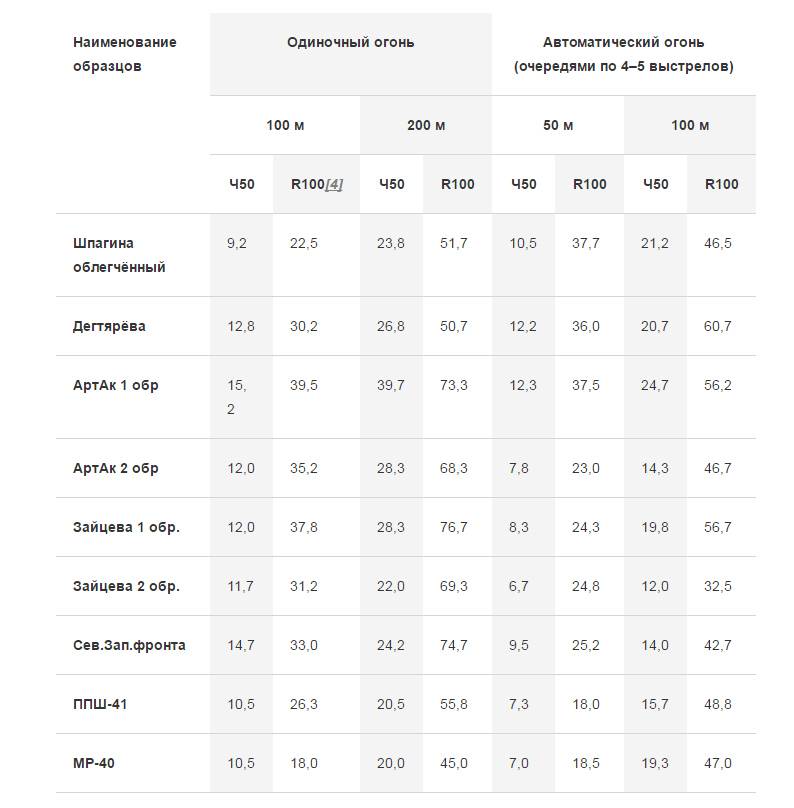
The result of the first stage of testing was the logical conclusion that the total weight of the system had the greatest impact on the accuracy of shooting from a submachine gun. The influence of the dynamic shoulder was also noted - the submachine gun Degtyarev, distinguished by the highest value of this characteristic, didn’t shine with accuracy. In this case, for some reason, the testers did not consider it necessary to note the high accuracy of the German MR, but "praised" it indirectly, giving a positive assessment of its simplified Soviet copy to the 2 model of the Academy. The testers noted that the blows in the rear position of the bolt of this submachine gun are weaker than those of other specimens examined, as a result of which the weapon shakes less and shooting is more convenient. It should be noted that the firing rate of the MP-40, like its Soviet twin, was approximately 2 times lower than that of the other participants in the tests.
The next stage of testing was to determine the performance characteristics of the submitted samples - ease of loading, assembly / disassembly, aiming and firing. Here, comments received almost all samples of submachine guns. For example, the model Degtyarev got for all the same short butt, because of which, with accurate shooting, it was possible to hit the back plate on the bow of the shooter.
But most important was the other test. With the sad experience of the Tokarev self-loading rifle, which the army eventually went through with a wave of complaints about its unreliability, the testers approached the issue of assessing the survivability and reliability of the samples presented. In defense of CBT, it can be said that its efficiency depended very strongly on the technical literacy of the fighters and the proper care of the weapon. After most of the fighters who knew how to competently exploit this weapon left the Red Army and problems began with its reliability and sensitivity to pollution. Taking into account the accumulated experience, the new submachine guns were tested in the following conditions:
1) with grease;
2) when dusting with cement dust for 10 minutes in a special box;
3) when washed with kerosene and rubbed dry parts;
4) at declination and elevation angles of the order of 90 degrees;
5) after the 12-hour weapon stays on the snow (at a temperature of approximately -10 degrees).
From the new Shpagin submachine gun, 2329 shots were fired and 3,3% of delays were received. Their greatest number was obtained after the dusting of the weapon - 15%, after the presence of the submachine gun in the snow - 8% and at declination angles - 5,7%. After the 1008 shots (or 2808 with the previous shots from the sample), cracks began to appear on the back of the receiver cover, and the fiber damper cracked. After 2329 shots (or 4129 in all), a barrel swing was detected. To continue the tests of the Shpagin submachine gun under such conditions, the commission considered it an inexpedient idea. On the one hand, 3% delays are few. But behind these dry statistics figures - three out of a hundred patrons, that is, a chance to “catch” the delay exists in almost every horn or disk. And in a fight, a soldier can only have one such episode.
From the submachine gun Degtyarev modernized during the tests, a 2374 shot was fired and 0,5% of delays were received. The largest number of them was observed after the weapon was in the snow - 4%. At elevation angles close to 90 degrees and with a thick lubricant, the submachine gun completely refused to shoot, giving continuous non-movement of the cartridges. In addition, during the tests, the axis was shaky, and the shaking of the folding butt was also noted, as a result, the PPM was sent for revision following the model proposed by Shpagin.
Best of all showed the first sample of the Academy, from which the 2233 shot was made and the total 0,6% of delays received. However, after firing on the weapon, cracks were found at the rear walls of the receiver, near the stem stud and near the figured safety cutout. But the main outsider of the tests was the submachine gun of the North-Western Front - 387 shots and 15,2% of delays, plus the base of the front sight with a namushnik.
In general, the final conclusions of the commission were not joyful for the majority of designers and their offspring. According to experts, in terms of ease of handling and firing from different positions, no single sample fully meets modern requirements, but the 1 sample of the Academy and the modernized Degtyarev submachine gun showed themselves better than others against them. By the failure-free operation of the automation, it was able to withstand only the 1 sample of the Academy (Bezruchko-Vysotsky). In terms of survivability, none of the samples submitted for testing could not stand them. As a result, the commission recommended that the above two machine guns be completed and 5 be submitted for re-testing no later than 1942 on April, while it was decided to consider the refinement of other products impractical. It was during the trials that started on April 5 that Sudayev’s submachine gun (PPS) appeared, which was able to compete with the PPSh.
Information sources:
http://warspot.ru/3300-neizvestnye-soperniki-ppsh
http://nvo.ng.ru/history/2010-02-26/12_guns.html
Open source materials
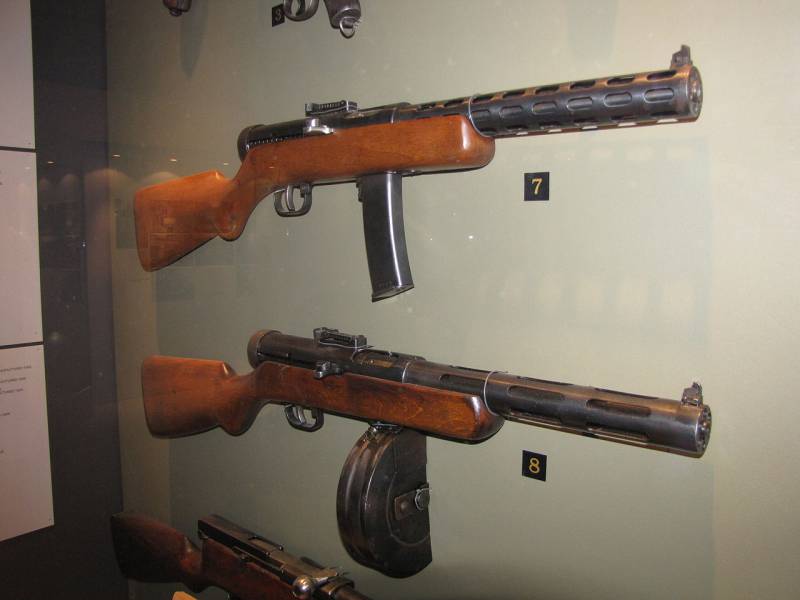
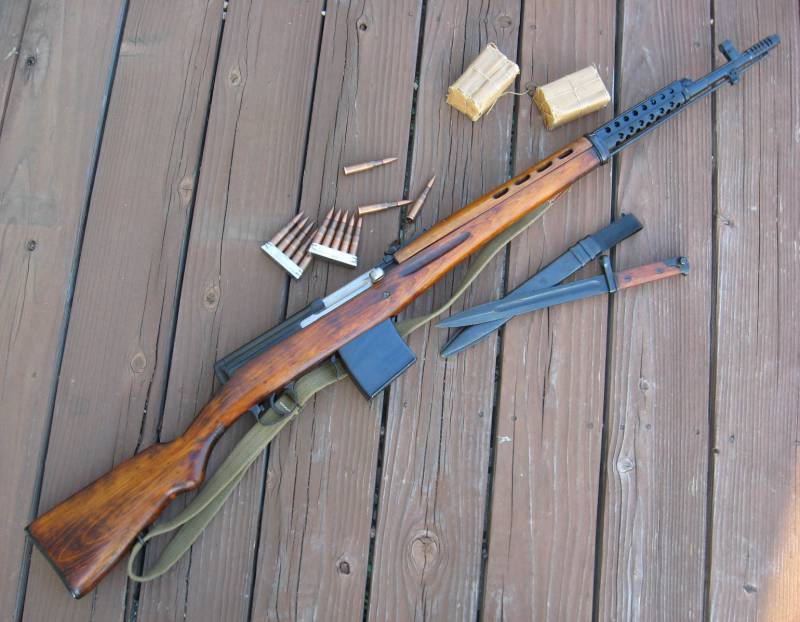
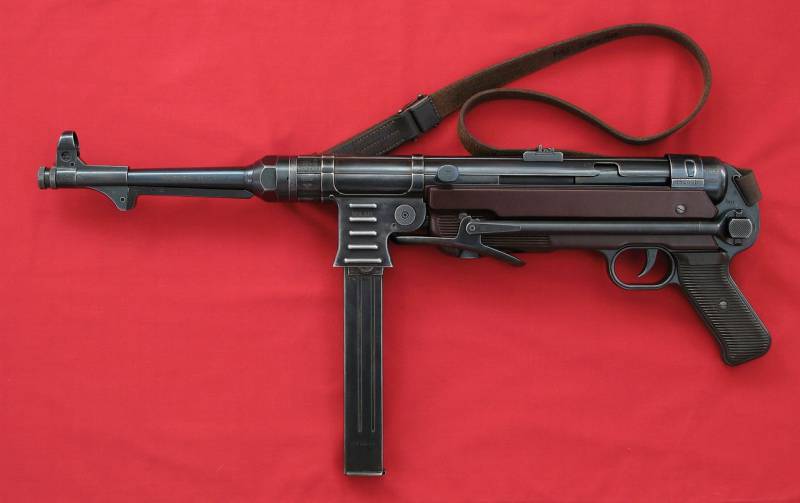
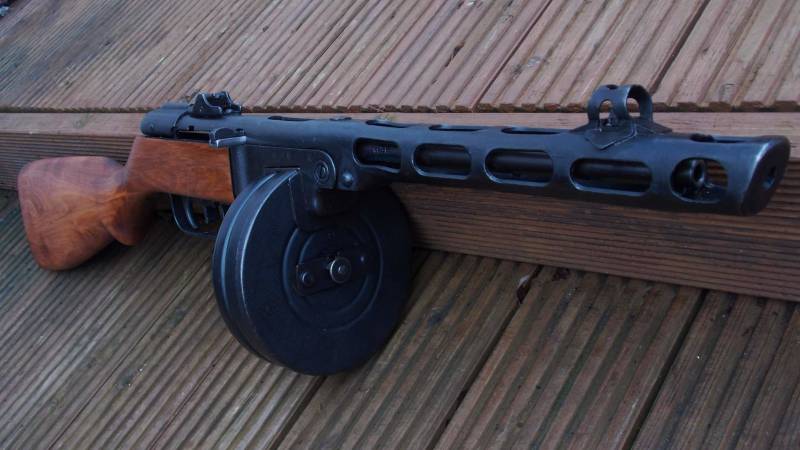
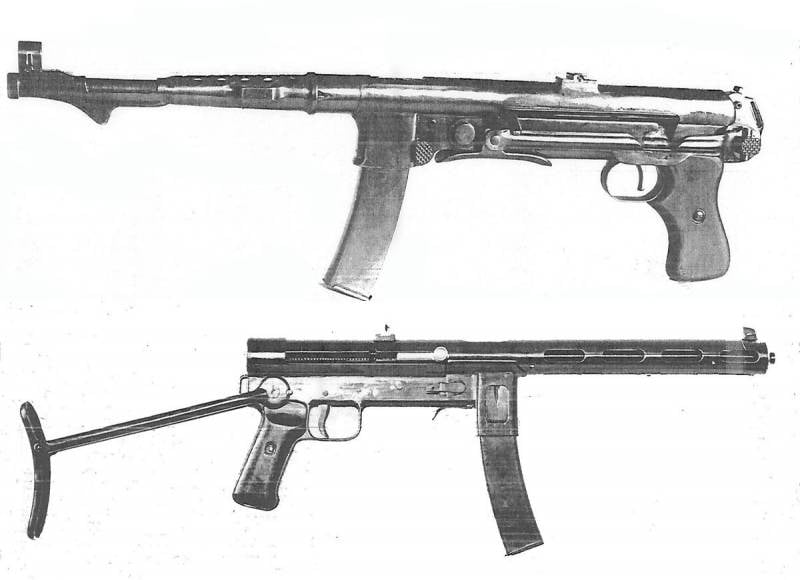
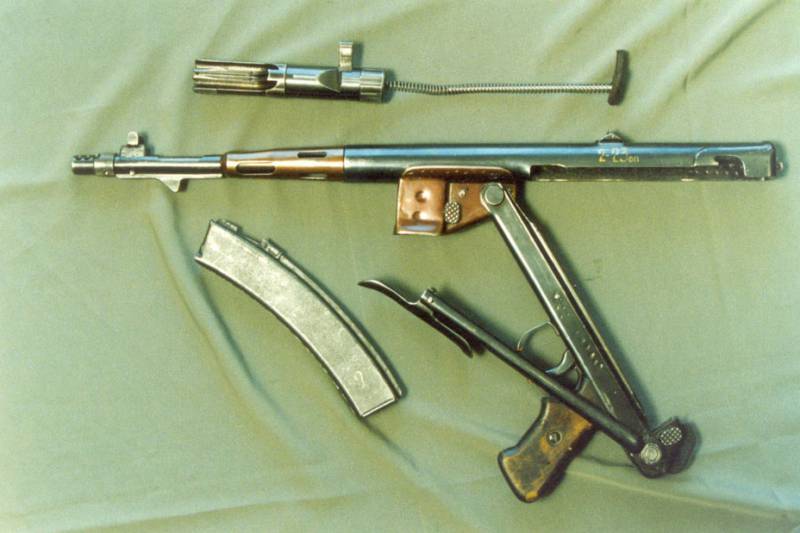
Information